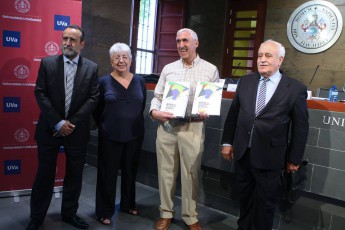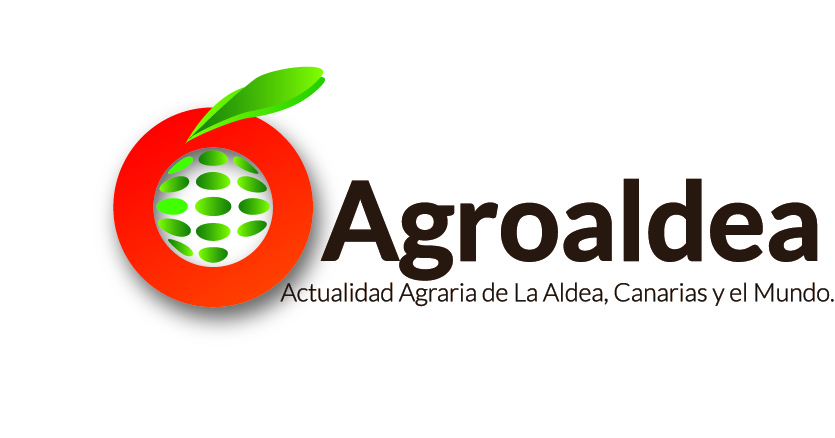![]()
 Edited by MAGRAMA and coordinated by Professor Fernando Molinero, comes to the market with the aim of being witness to the agricultural landscapes of the country and its recent transformations.
Edited by MAGRAMA and coordinated by Professor Fernando Molinero, comes to the market with the aim of being witness to the agricultural landscapes of the country and its recent transformations.
The atlas, published in two volumes, with price 30 euros each, He has had the participation of 70 authors, between 50 university researchers involved in the project and 20 external, who have worked driven by the basic will to provide a current view and adjusted to the reality of the object of analysis it is the systematic study of the agricultural landscapes of the country.
Divided into three parts, The work includes agricultural landscapes of Spain through major transformations, above all, which starts in mid-twentieth century the, with modernization, as a result "of economic exploitation of the ecological potential for human societies or groups, with a specific cultural and technical level in each region and historical moment, as said Fernando Molinero.
The first part is devoted to theoretical and methodological aspects, essential, along with a view from the air of the landscape transformations of the last quarter century, by a pilot geographer. The second study classes agricultural landscapes and the third focuses on the study of agrarian landscape units, characterized by authors who know them through their experiences.
For this reason, the work is "more than the sum of chips landscape; It is a living testimony of how the peasant Spain has become a rural Spain ", whose images are collected, analyze and try to assess their ecological means, technical and social.
The work is, essentially, the result of collaboration between the Ministry of Agriculture, Food and Environment Research Group on Agricultural Landscapes of Spain.
This group started its journey a little over ten years and has had as milestones the following times:
-In the year 2004 He published the Atlas of Rural Spain, in which universities participated in Valladolid and Barcelona, in addition to the Ministry of Agriculture.
-In the year 2011 He published The landscape of Spain, in which collaboration was extended to include the five universities that drove the project (University of Valladolid, University of Barcelona, Autonomous University of Madrid, Pablo Olavide University, University of the Basque Country), along with other centers that provided participants and collaborators, including the University of Sevilla, the University of La Laguna and the University of Alicante.
-Years 2013 and 2014: sees the light the work presented today, Atlas of agricultural landscapes of Spain, in two volumes, well illustrated, with plenty of cartography, documentation and images, that make the book a particularly significant work of its kind.
[quote]The work has identified, characterize, illustrate and document 20 landscapes and classes 70 units.[/quote]
The greatest value of this book lies in the fact that an all-encompassing and inclusive study. It is a testament to the Spanish agricultural landscapes and its recent transformations, from Galicia to Murcia, from Catalonia to Andalusia, from Islas Canaries, through the rest of the coast and peninsular.
As regards the design of the Atlas should be emphasized that, from the start, you opt for representativeness at the expense of completeness. The starting point was the interpretation of the Spanish territory as a 'mosaic of landscapes' agricultural matrix.
The work consists of three distinct parts. The first, devoted to theoretical and methodological aspects, essential, in addition to a view from the air of the landscape transformations of the last quarter century, by a pilot geographer.
The second study "classes of agricultural landscapes", What, with twenty, covering the three domains of the Spanish territory: Atlantic, the Mediterranean and subtropical canary.
Based on satellite imagery, represent the landscapes of agricultural regions of Spain: several, contrasted, multiform, a summary of peasant life, condensed in some areas that have sustained the daily struggle of millions of rural dwellers.
The third part is devoted to the study of "agrarian landscape units", characterized by authors who know experientially and, thus, They provide more than a banal study. They are shreds of life that appear pinned paragraphs, Images and descriptions of their authors.
For all these reasons, Atlas is more than the sum of index cards Landscape; It is a living testimony of how the peasant Spain has become a rural Spain, whose images collect, We analyze and try to assess their ecological means, technical and social.
This atlas is intended for public worship, in general, and two types of professionals, in particular. Anyone interested in landscape issues can appreciate the value of synthesis of the work. Special interest is for professionals working in the landscape, from computers territory, urbanists, geographers, economists, sociologists ...
But it also has a reference value for political and territorial planners, rural development agents and any professional related to the rural world, heritage and rural development.
This "Atlas", complementary to the previous book The landscape of Spain. Characterization, evolution and classification, It serves primarily to acquire an overview of the values of the agricultural landscape as a lever for rural development.
both works, The book and Atlas, They provide insight on the full and inclusive agricultural landscapes Spanish, its value, the method of analysis and characterization and for the keeping. Both works are necessary to proceed with the demarcation of heritage landscapes of Spain, by imperative of the European Landscape Convention, signatory states must make, among which is Spain.
Both volumes of the Atlas, of 1.074 PP and total, They appear as an editorial novelty of the Ministry of Agriculture and the Environment on its website, in the following links:
Title: Atlas of agricultural landscapes of Spain Volume I. F.Molinero (chief coordinator)
Index: http://www.magrama.gob.es/es/ministerio/servicios/publicaciones/H108574_tcm7-321053.pdf
Title: Atlas of agricultural landscapes of Spain Tomo II. F.Molinero (chief coordinator)
Index: http://www.magrama.gob.es/es/ministerio/servicios/publicaciones/H108799_tcm7-329420.pdf

